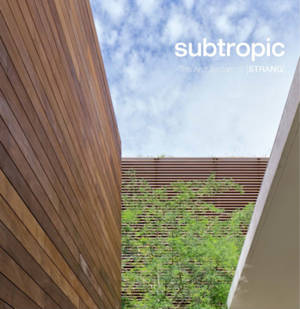
- Afhalen na 1 uur in een winkel met voorraad
- Gratis thuislevering in België vanaf € 30
- Ruim aanbod met 7 miljoen producten
- Afhalen na 1 uur in een winkel met voorraad
- Gratis thuislevering in België vanaf € 30
- Ruim aanbod met 7 miljoen producten
Zoeken
Omschrijving
. Second Monograph on the Miami-based, award-winning firm. 10 featured residences and a chronology section with built and in-built work. Photography by Claudio Manzoni, Kris Tamburello, Robin Hill, Calder Wilson and others. Essay by Anne-Marie Russell, Executive Director of Architecture Sarasota. Other contributions by John T. O'Connor and Max Strang The work of [STRANG] is beautifully explored in this robust monograph which highlights the firm's site-specific and climate-driven designs. The ability to create stunning architectural designs while maintaining an acute awareness of the surrounding environment has come to define their work. Under the creative direction of Max Strang FAIA, the Miami-based firm continues to advance many of the timeless concepts set forth by the famed Sarasota School of Architecture. Strang's early exposure to that mid-century modernism movement resulted in a deep respect for structures that are intimately connected to their surroundings as they celebrate the Florida climate.This second monograph of Strang's contains a collection of conceptual drawings, text, and professional photography that underscores the ongoing relevance and importance of regional modernist design. It is the architectural responses to site and climate that infuse the specific designs with character and identity, resulting in a uniquely Floridian version of modernism.
Specificaties
Betrokkenen
- Auteur(s):
- Uitgeverij:
Inhoud
- Aantal bladzijden:
- 668
- Taal:
- Engels
Eigenschappen
- Productcode (EAN):
- 9781946226518
- Verschijningsdatum:
- 1/01/2023
- Uitvoering:
- Hardcover
- Formaat:
- Genaaid
- Afmetingen:
- 238 mm x 240 mm
- Gewicht:
- 3379 g

Alleen bij Standaard Boekhandel
+ 279 punten op je klantenkaart van Standaard Boekhandel
Beoordelingen
We publiceren alleen reviews die voldoen aan de voorwaarden voor reviews. Bekijk onze voorwaarden voor reviews.











